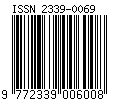Additional Records of Macroscopic Fungi at IPB University Campus Forest and Their Potential Use
DOI:
https://doi.org/10.19184/bst.v12i4.47438Keywords:
Agaricales, diversity, macrofungi, taxonomy, West JavaAbstract
Fungi are heterotrophic organisms and become decomposers in various types of environments. In Indonesia, fungi have a high level of diversity, but not all of them have been properly identified. The type of ecosystem that can grow mushrooms includes forests, due to high levels of humidity so fungi can easily adapt. The IPB Campus Forest is an area planted with various types of trees with the aim of being a conservation and protection area for flora and fauna. IPB forests have various types of higher plants, ferns, undergrowth, and various types of fungi (microscopic and macroscopic). This research aimed to increase information on the diversity of mushroom types in the IPB Campus Forest to serve as a basis for their use in the future. Fungal exploration was carried out using the random roaming method. Fruiting bodies were identified based on macroscopic and microscopic characters, then isolated on PDA media. This research confirmed the occurrence of 3 types of fungi, namely Lentinus arcularius, Pycnoporus sanguineus, and Marasmius sp. All three are members of the phylum Basidiomycota. L. arcularius is found on wooden twigs, has a brown pileus with white edges, a smooth surface and serrated edges, a concave pileus, transparent and oval-shaped spores, hyphae aerial, colony white to cream from upper view. P. sanguineus grows on a substrate of dead tree branches that have fallen to the ground, the basidiomata are red mixed with orange and almost semi-circular in shape, the edge of the cap is rounded and flat with a yellowish color, the pseudostipe is directly attached to the substrate, the hymenophore is pore-shaped with a red and orange color, overlapping and pigmented hyphae, colony radial, hyphae aerial, colony white from upper view. Marasmius sp. grows gregariously in the litter, the pileus is shaped like an inverted bowl and is orange in color, the edges of the cap are flat with small-serrated cap margins, the hymenophore is in the form of lamellae with an adnexed attachment, the hyphae are club-shaped with the sterigma shaped like a root, the colonies are cream, the surface is smooth. All fungi from this study have the potential to be used as medicinal ingredients and sources of other secondary metabolites. The results of this research add to data regarding the diversity of fungi in Indonesia and can be used as literature for subsequent research. Further works should consider not only the diversity but also the bioprospection potency of wild mushroom.
Downloads
Downloads
Published
Issue
Section
License
Copyright (c) 2024 Sedek Karepesina, Kurniawati Purwaka Putri, Amandita Lintang Rumondang, Ivan Permana Putra

This work is licensed under a Creative Commons Attribution-NonCommercial 4.0 International License.



